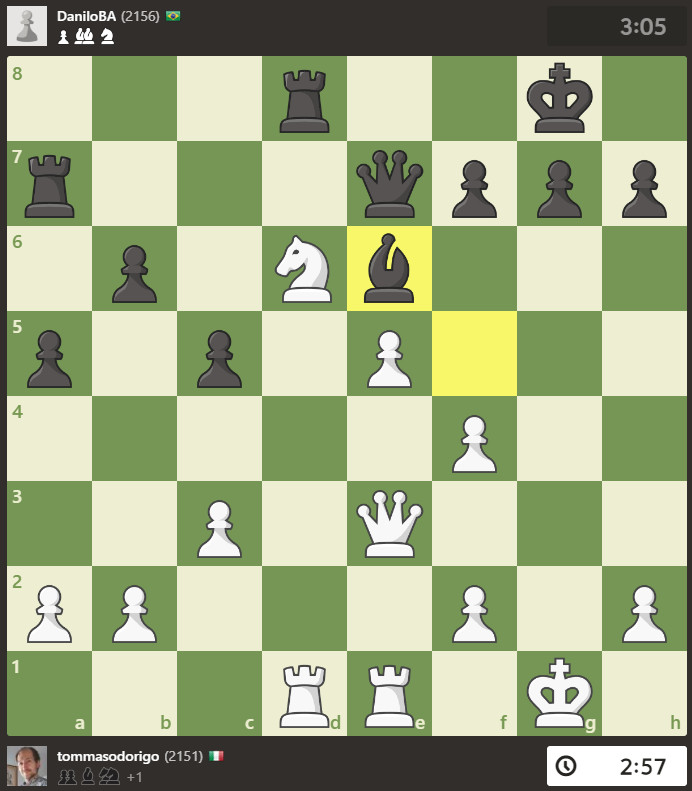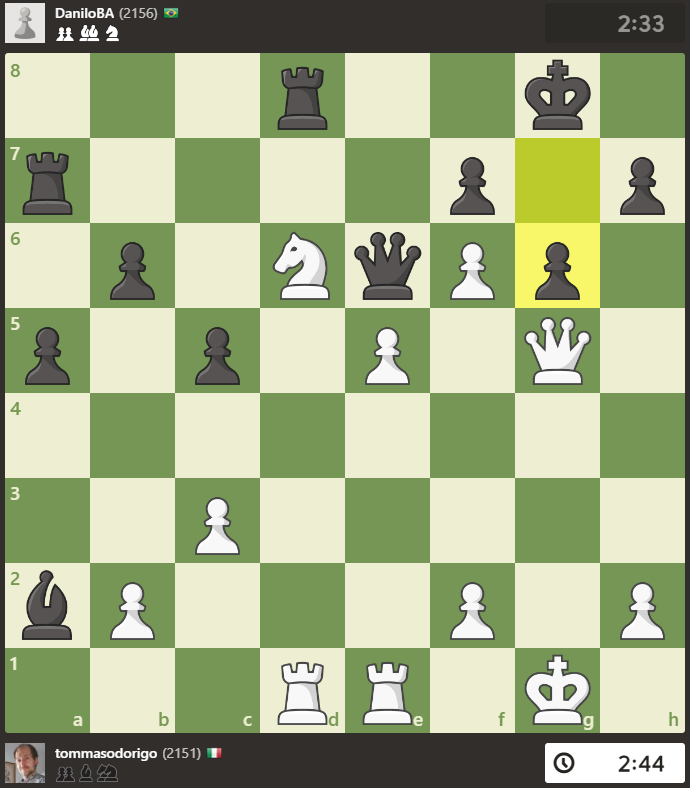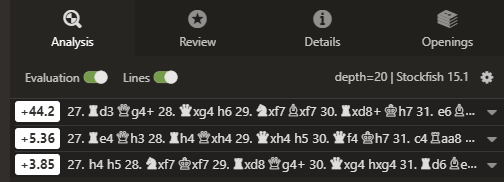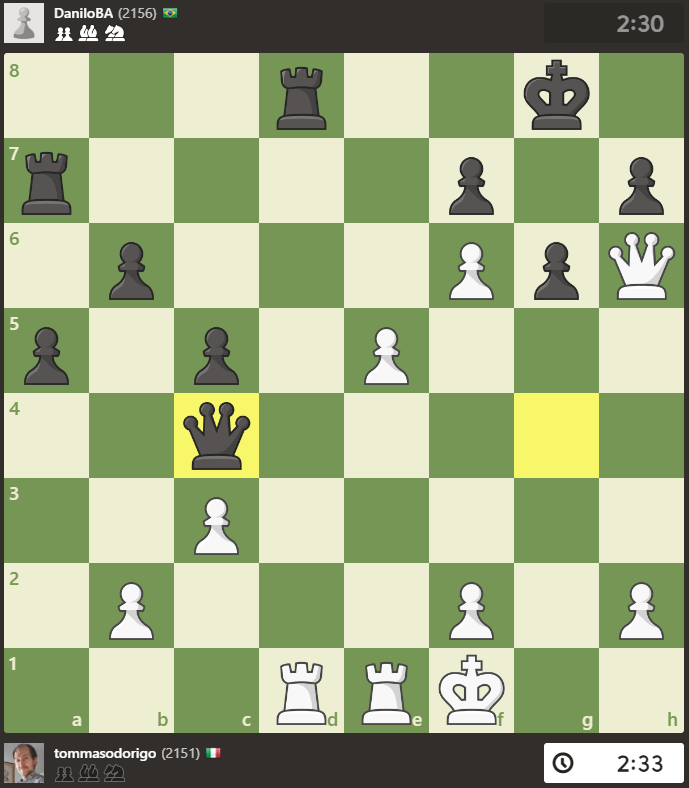One such case happened this evening to me, while I was playing some random blitz games on chess.com. The position below arose out of a reasonably well played (no blunders on either side) Scotch opening. If you know the game a little, you will easily recognize that white has a strategic advantage as well as a material one. The material (one pawn up) is not important here; the strategic advantages are given by a space advantage, an active knight against an irrelevant bishop, and a potential for a kingside attack. Black must be exceedingly accurate to avert defeat.

It is white's move here (see diagram 1), and the last two moves where the landing of the knight on d6 (Ne4-d6), attacking the black bishop, and the move of the bishop on e6. That is the first real mistake of black: g7-g6 would have been sounder, keeping hopes alive to repel white's attack. From this point on, my play was flawless (as previously) but also very strong:
24. f5! Bxa2?!
The position is winning for white, but this pawn grab hastens the end. Relatively better was 24....Bd7, to which the strong continuation could ensue: 25.e6! fxe6 26.fxe6 Ba4 27.Nf5, and the attack is deadly.
25.f6!!
The only clearly winning move, and one I did not have to calculate - I was sure it was sound, as the black squares of the enemy king must be weakened for my attack to succeed. Here black played a move that apparently "loses instantly",
25.... Qe6?!
but really it cannot be criticized, as all moves lead to a rout: if 25.... Qf8 (the best one), 26.fxg7 cannot be met reasonably: e.g. 26....Qxg7+ 27.Kh1 will be followed by Rg1; while 26....Qe7 27.Nf5 is also a quick win for white.
Now matters seem to be fairly easy: with the following move white creates a deadly attack on g7.
26.Qg5 g6 (see diagram 2)

But now, the knee-jerk move 27.Qh6 would be met by a perpetual check?! Can you assess whether that is the case or not, with the clock ticking off your precious seconds left? Funnily, even the all-powerful Stockfish engine does not advise Qh6, fearing that black may escape with a perpetual, and offering the very strong Rd3 instead, which however does not mate as quickly!:

Aha, the machine can err, too! Qh6 is arguably stronger, and in fact after playing it out, the engine's evaluation jumps up to Mate in 13!
27.Qh6!!
The following moves are the forceful way by which black can hope for a perpetual:
27....Qg4+ 28.Kf1 Bc4+ 29.Nxc4 Qxc4+
What do you play here? It is your turn to move (see diagram 3)

...
...
...
...
...
...
...
...
...
...
...
30.Rd3!!
This is the move that Stockfish itself couldn't figure out four moves earlier. It is a spectacular deviation, which ensures that white's king will avert perpetual check, thus setting up black to the unavoidable mate in g7.
30....Qxd3+ 31.Kg1
and black resigned. Truly satisfied of my play, I happily signed off chess.com for the night! As the pictures show, the entire winning sequence from start to finish took me a mere 30 seconds!
It is funny





Comments